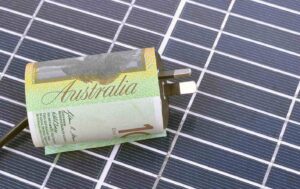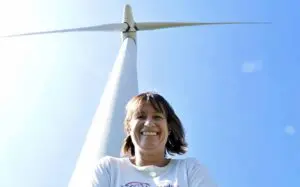Previously we explained the big savings possible should you choose to heat your home with a reverse-cycle air conditioner rather than burning gas.
But there is more to improving comfort and reducing energy costs and greenhouse gas emissions than the sole decision of which way to heat. Attention to draught-proofing, insulation, and window coverings can make electrifying your home even easier.
We know many Australian homes rate poorly for comfort during the extremes of winter or summer. We even have a name for them: “glorified tents”.
As Richard Keech, co-admin at My Efficient Electric Home has said, one reason Australians accept this state of affairs is because many have never experienced what it’s like to live in a high-performing home. He suggests people spend a weekend in a thermally-excellent B&B rental midwinter just to see what’s possible.
Migrants to Australia from cold northern climates such as myself often report they have never been colder than during a winter spent in a poor-performing Australian home.
In this country we accept that we can see right through our walls and under our doors to the outside world. We imagine excessive “fresh” air to be a good thing.
We accept the inside glass or frames of bedroom windows dripping condensation and growing mould in the morning. We look past dust, smoke, and generally filthy air raining down through our many ceiling and wall penetrations.
In other parts of the world if this were the building standard, there would be obvious clues to poor performance such as snow blowing across the loungeroom floor. And it wouldn’t be just moisture and mould on the windows it would be beautiful patterns of frost.
Also contributing to an unconcerned attitude, for years in Australia gas was cheap, an often unwanted by-product of pumping out the more valuable crude oil.
Concerns about climate disruption were still over the horizon. So why spend effort and money draught sealing when you could just turn up the gas heater to eleven!
Why start a business offering double-glazing when people consider such fancy windows to be an unnecessary extravagance for only the rich and famous?
But there may be change coming. A predictable 500 new members per week flood into My Efficient Electric Home each time the weather turns cold across eastern Australia.
With nearly 30,000 members now, this is one gauge of people’s interests in being more comfortable, reducing greenhouse gas emissions, reducing energy bills, and of using new technologies they are hearing about such as heat-pump-condensing clothes dryers, LED lights, solar PV, induction cooktops, or honeycomb blinds.
The minimum legal requirement for new home thermal performance is not as bad as it used to be and in future years will improve further.
So based on my experience advising in over 1,000 Victorian homes, what are some simple things folks can do to improve their home’s comfort and energy performance?
Focus on draught sealing, insulation, and internal window coverings, and on moisture management. But beyond that, as I’ll illustrate below, the message quickly becomes more complex and obtaining professional advice is recommended.
Can those old-style wall vents be sealed up, especially if you can see straight through to the outside?
Probably, although the spiders will be disappointed. But don’t break out the plaster before you’ve had your remaining gas heaters checked at least every two years to ensure they aren’t bringing poisonous carbon monoxide into your home.
A leaky home might be the only thing preventing your gas heater from killing you. A recent client showed me their carbon monoxide detector, purchased a few winters ago when they found themselves passing out on the couch at night when watching TV.
So probably the wall vents can be sealed – unless you aren’t managing moisture. Drying laundry on racks by the gas heater used to be thought as an economic and green thing to do. In many homes I see it has been a point of pride that they’ve not had to buy a clothes dryer.
But the practice of hanging clothes to dry indoors will have to end as you tighten up your house. Fortunately heat-pump-condensing clothes dryers now exist that have energy ratings right up to ten stars indicating miniscule energy use.
But the best part is how they condense all the moisture extracted from your clothes into a receptacle. Damp leaky laundries can be a thing of the past with my wife telling friends “the renovated laundry is the nicest room in our house!”
Nor do bathrooms have to be cold and damp with available technologies such as the Showerdome and humidity-sensing extraction fans.
Some other simpler tips? Check your filters! Any heating system that blows air around should have a filter. Reverse-cycle air cons have filters that can be DIY cleaned, but who knew?
Ducted heating systems should have a filter, not only to protect your sinuses and lungs but also to keep ducts, heat exchangers, and blowers dust free, which is critical to their efficient performance and long life.
And again for ducted systems, are you getting heating (or cooling) from every individual room outlet? If not, something is seriously wrong.
A large animal has crawled beneath your house and crushed your duct, or the tape has failed in the UV light and the duct has fallen away, or the system was never constructed properly in the first place by the poor woman or man working under the house in miserable conditions.
Or in the case of one client, an extra, defunct, disconnected ceiling-duct outlet in a room was a relic from a former heating system.
It served no purpose other than to immediately leak from the room all the heat produced by the new heating system, and to rain roof-space dirt and dust down onto the baby’s crib (fortunately not yet in use).
The list of simple things that can remarkably improve a home’s performance goes on and on. Seal up evaporative cooling vents so that the system doesn’t cost your more to use in winter than in summer.
There are seals for doors, but do the research and get the ones that really work. Bubble wrap for windows: voted the #1 most-applied winter window treatmentamong our members at My Efficient Electric Home. And so on.
If you don’t know where to start or what to prioritise, some professional help can be found in many Australian locations.
Rug up this winter (a focus on keeping the person warm rather than the room is always best practice) and enjoy staying warm in your electrified home.
See also:
Explainer: What’s the cheapest way to heat my house if I get off gas?
Explainer: Why hot-water heat pumps are great for homes with or without solar PV
Explainer: How electric induction cookers work and why they clear the air









